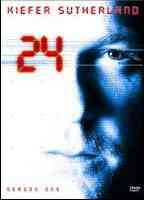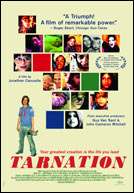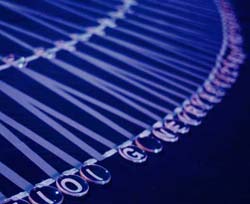We’ve been talking about reading modes, but let’s imagine, for a moment, that the future book will change reading itself. Perhaps it will combine the performance aspects of television, film, animation, and theatre with the interactive aspects of the world wide web to forge a book that reads you as you read it.
Science fiction writer Neal Stephenson imagines such a book in his novel, The Diamond Age. The main character is a book–an illustrated primer that functions almost like an artificial intelligence. It bonds with its reader, notices things about her life, and uses those bits of information to create instructional narratives on the fly. These stories are performed by live “ractors” (human actors working in reactive/interactive scenarios) and broadcast on the pages of a book. The physical book is leather bound, with “smart” paper pages that support electronic text and animated images. The primer looks like an old-fashioned book, but acts (or reacts) like a book of the future. In Stephenson’s imagination, it’s this element of interactivity and performance that distinguishes the future book from its predecessor.
But lest you worry that I’m basing my research on the imaginings of my favorite science fiction writer, I can assure you that the performing book is already here in its nascent incarnations. In the image of Stephenson’s primer, a company called Touchsmart is developing a book with “smart” paper that functions like a touch screen, allowing readers to find answers to their questions instantly, through a wireless connection to the internet and to other electronic devices that broadcast content.
Publisher, Peak Interactive Books, whose stated mission is to, look beyond the print book, beyond television, beyond the web page, to the interactive book of the future, is publishing interactive multimedia textbooks including: Cryosurgery for Prostate Cancer, and Using Interactive Media to Communicate.
The interactive CD Roms published by Voyager are an excellent touchstone in the history of performing books. TK3 software, which has been used to make everything from textbooks, to performing paintings, also draws on the performing book model. The institute is presently developing “Sophie,” ebook authoring software that will allow most currently available media to be incorporated into an electronic book.
As for the book reading you. Ben’s recent post “finally, I have a Memex!” describes how the semantic web will add a new dimension to the growing power of search engines. Their ability to collect personal information has already been incorporated into the recreational and academic reading experience. What we are waiting for is the book that builds its content out of the bits it gathers from our lives.
Category Archives: The Performing Book
curling up with a good movie
i spent the better part of the weekend in a marathon viewing of the first season of 24 — the thriller TV show which has 24 episodes, one for each hour of a specific day. the first season (season four is on the air now) takes place on “the day of the california presidential primary” and follows the brilliantly interwoven story of politics, espionage and family relations. a non-stop roller-coaster ride with deligtfully unexpected and usually believable plot twists.
i watched 24 on a set of DVDs; most of the time the screen was on my lap (via my apple notebook) or right in front of me on a table. the intimacy of watching in that way, plus the duration created an experience that was much more akin to reading a novel you can’t put down than watching a movie or tv show.
it would have been even more interesting and more novel-like if all 24 episodes were available simultaneously with a complete index of scene content and dialog so that i could have gone back to review key scenes the way you can in a book.
not arguing here that there are no differences between novels and films, but that some of what makes a book a book — random access and intimacy — can be found in new media and you can see the seeds of new forms of expression. figure that people coming out of film school in the next ten years will find themselves going in one or two ways; either making giant spectacle films intended for 3D imax or making very dense, intimate novel-like “films” that are intended for an audience of one at a time.
the film as book
 One of the year’s big stories in film was Jonathan Caouette’s haunting autobiographical feature Tarnation (trailer), famous as much for its methodology and tiny budget as for its strength as cinema. Made entirely on Apple iMovie on a desktop computer, and costing a mere $218.32, Tarnation is a patchwork quilt of sound, image and testimony, chronicling the troubled life of its author and his relationship with his fractured mother.
One of the year’s big stories in film was Jonathan Caouette’s haunting autobiographical feature Tarnation (trailer), famous as much for its methodology and tiny budget as for its strength as cinema. Made entirely on Apple iMovie on a desktop computer, and costing a mere $218.32, Tarnation is a patchwork quilt of sound, image and testimony, chronicling the troubled life of its author and his relationship with his fractured mother.
The remarkable thing about Tarnation is that Caouette made it in much the same way he might have written a print autobiography – alone, at a computer, pouring over a lifetime’s accumulation of notes, scraps and memories. Only, the notes and scraps are in the form of VHS and Super-8, photographs and answering machine tapes. Growing up in the Houston suburbs, Caouette became literate in a multitude of forms, weaving a rich web of fiction as a blanket between him and his often-grim reality. These fictions ranged from eerie staged “confessions” by an 11-year-old Caouette impersonating a battered woman, to glamorous lip-synch music videos, to high school slasher flics. Tarnation is as much the story of this self-education in alternate forms of writing as it is of Caouette’s family and upbringing.
Watching Tarnation isn’t quite like watching other films, and the fact that it was made by a single, solitary person has a lot to do with this. It has long been taken for granted that film is the product of collective labor, that behind each frame lurk dozens of invisible hands. But here, as with a book, there is a single author, and you sense palbably that you are witnessing the craft of a private forge, far from the world of studios and crews – far from our usual notion of “the production.” And as with a book, our encounter is very personal and unmediated – we are brought directly into the dreams and psychedelia of the author’s mind.
Caouette describes the experience on the film’s website:
 “TARNATION is designed to mimic my thought processes so the audience can also feel like they’re in a living dream, which can be scary and intense, but also beautiful and glorious. TARNATION is a documentary in the sense that it’s a true story but it’s also a happening, an encounter, and a way for you to meet me and for me to meet you.”
“TARNATION is designed to mimic my thought processes so the audience can also feel like they’re in a living dream, which can be scary and intense, but also beautiful and glorious. TARNATION is a documentary in the sense that it’s a true story but it’s also a happening, an encounter, and a way for you to meet me and for me to meet you.”
Caouette’s film demonstrates the possibility for lone artists to engage powerfully in media that were previously very difficult and expensive to access. Already, people are producing highly polished videos made with digital snapshot cameras. The modes of production – of writing – will continue to increase and expand.
Tarnation is also a clue to possible new directions for documentary and autobiography in the digital age, and hints at ways that films and books might begin to merge.
Gus Van Sant, who became one of the film’s executive producers, told Wired in January: “People assumed that one day film would be as accessible and inexpensive as writing, and now it practically is. For the price of a typewriter, you can make films with sound and burn them on a DVD.”
light reading
 “The Book as Object and Performance exhibition (through January 22 @ Gigantic Art Space in New York, curated by Sara Reisman) presents work by over 20 artists, each using the book as a point of departure to explore the physical, sensual or conceptual dimension of reading and the written word.
“The Book as Object and Performance exhibition (through January 22 @ Gigantic Art Space in New York, curated by Sara Reisman) presents work by over 20 artists, each using the book as a point of departure to explore the physical, sensual or conceptual dimension of reading and the written word.
But despite lofty ambitions, the exhibit provides little more than light reading. Though several works are visually arresting, few do more than glide over the potentially bottomless themes at hand. Most stick to playful reorganization of materials: a pile of wooden hoops culling newspaper headlines from around the globe; a precarious tower of books with a gaping acid-chewed hole at the top; a doorway filled with crumpled sheets of paper; a dictionary with words dislocated from their definitions. A collection of small, easily forgotten pleasures.
An exception to this is a mysterious piece titled “Perseverance” by Jenny Perlin consisting of a small, worn book in a glass case, above which plays a strange film of man battling anxiety, chewing his nails to the quick. Also memorable was a one-night-only “reading” of the ten commandments by Polish-born artist Maciej Toporowicz, a piece first performed in communist Poland in 1980, and part of small program of live explorations last night, filling out the “performance” part of the equation. The gallery lights are extinguished and Toporowicz takes his place in front of an illuminated glass bowl of water, perched atop an open Bible. He places his face in the water, as though reading through the aqueous medium, and remains there long enough for the audience to start imagining.. what? That he is drowning in this sacred, much-abused text? That he is drawing impossible sustenance from its power? He begins to twitch and tremble. Finally his head rips up out of the water, gasping.
The photo above shows bottles containing philosophical texts that have been literally chewed up and spit out. Click below to see more pictures from the exhibition…
the book as object and performance – exhibit in New york

“The Book as Object and Performance is an exhibition of artworks that takes the format of the book as a point of departure to deconstruct that which is bound up in text, image and the physicality of books.”
Through January 22 @ Gigantic Art Space
*Plus: tomorrow night, in conjunction with the exhibition!
Thursday, December 16, 6-8pm: an evening of performances by AUX (Reynard Loki and Christopher Shores), Joseph A. Fish, Jesal Kapadia, Pia Lindman, and Maciej Toporowicz..
